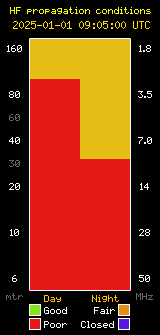News
- Details
- Written by: Maintenance Guy
- Category: News
- Hits: 778
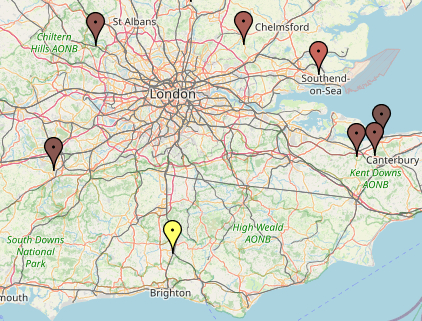 Interesting lunchtime net today, and I thought I'd provide a quick update on the club's KiwiSDR usage.
Interesting lunchtime net today, and I thought I'd provide a quick update on the club's KiwiSDR usage.
All four primary slots were filled today at 13:30, and all tuned to the lunchtime net - myself, Barry, Bob and Russell. There were also three additional 'campers', so seven people listening at the same time - a record for our SDR as far as I'm aware. 'Campers' are users who have no control over the receiver settings per se, but can piggyback onto one of the four primary audio output channels. I'm not 100% sure of how many campers are possible in total, but I believe it's three per primary user in this 'mode', which would give a maximum of sixteen users, but don't quote me on that - it may be less.
Beyond the basic maths of the chosen schema, there is a practical limit on the bandwidth of both the device itself and the maximum combined upload capacity of the Internet connection at the hall. I doubt very much whether we're approaching the latter, but the former is an unknown.
Just to recap briefly on previous articles, the Kiwi can be set up in one of three modes. One is an experimental high-quality audio only mode, which is great, but limits the number of users to just three. Not much use to us. The second mode is what it's set to right now - four users with regular audio quality and all with the graphical waterfall display.
The third mode is eight concurrent users. Whilst this mode allows eight primary users, only two of them (first come, first served) get the nice waterfall display. As we're regularly seeing more than four users wanting to access the SDR at a time, I'm going to switch it to this mode and see how it works out. It's just a trial, but if it works well and usage levels continue as they are it's probably the best option, above limitations notwithstanding. This mode will be switched on this morning (Saturday 1st October). I'm not sure how many campers this mode will support but I guess we'll find out as the club's SDR becomes ever more popular.
Other than that, I hope everyone's enjoying the new facility.
Band conditions were relatively good on Friday, with Bob (5&3 QSB) David (5&5 QSB) and Barry (4&3 QSB) all breaking through the KiwiSDR/Wellbrook noise level from time to time. I'm very happy with how it's performing generally speaking.
On other topics, I can hook Bob up occasionally for remote access to my Yaesu, but more often than not, I'm either testing developmental data modes and software on another band, testing other hardware SDR's on one of my loops, or using LoRa devices on ISM bands - none of which are compatible with 100W of HF out of the FTDX10. Remote operation of my HF station also requires exclusive use of the radio's single USB connection, which means I can't simultaneously run raw data or even standard digimodes etc. Hope that clears that up. That's why I'm often also listening on the SDR.
If any other full-licence-holding member wishes to book a slot with me to experience how it works, give me a shout. You'll need a Windows 10 or 11 PC with enough horsepower and enough disk space to install the SCU-LAN10 software.
As a final aside, there are another two contributions to the SDR transceiver fund incoming, so if you haven't donated yet, please consider helping to speed us on our way to the target.
I'm glad David likes the website too, by the way. Thank you for your kind comments.
Berni M0XYF
- Details
- Written by: Maintenance Guy
- Category: News
- Hits: 415
 Last Friday evening at the club, (live-streamed on our usual Zoom link) John Berry gave a talk on the fascinating world of Sporadic E.
Last Friday evening at the club, (live-streamed on our usual Zoom link) John Berry gave a talk on the fascinating world of Sporadic E.
Sporadic E (often abbreviated Es) is an unpredictable event that can happen at almost any time. It does, however, most often develop around seasonal peaks and normally during the daytime.
It's an unusual type of radio propagation which occurs within the E layer of the Earth's upper atmosphere at a height of between 50 and 100 miles, and can give rise to surprising long-distance communication opportunities for those radio operators that are ready to take advantage on the 2m, 4m, 6m and 10m amateur bands.
- Details
- Written by: Maintenance Guy
- Category: News
- Hits: 438
A wonderful afternoon of proper outdoor radio fun, interesting chat and beautiful scenery, not to mention the evocative soundtrack provided by the steam locos snorting their way north out of Horsted Keynes station on the Bluebell Railway.

The weather was entirely cooperative and it was very comfortable sitting around and chewing the fat in shorts and a t-shirt. A few circular dog-walks, the melodic sounds of a reasonable tribute band wafting up occasionally from platform one to our elevated position in the top field (apart from the murderous rendition of Wonderwall, for which I reported they guy for breach of copyright, it was that bad).
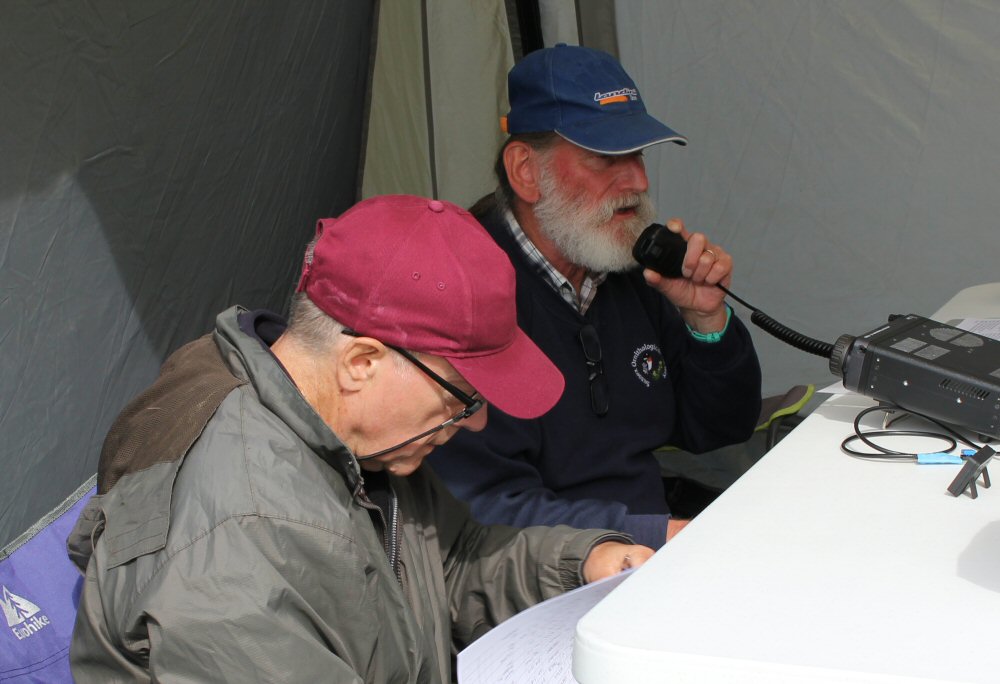
Oh, I forgot to mention that the chaps from DRG (Downland Radio Group) from who we received a gracious invite for the weekend, worked their way relentlessly through a pile-up for the entire four hours I was there. Excellent!
A few MSARS members made their way into the log on the day, including Adrian, Ron and Rob that I heard. Maybe a couple of dozen other ROTA stations too. Later in the afternoon, continental stations outnumbered the GB stations, with QSO's predominantly on 40m. Really good results from the 66' inverted V doublet.
I chased them down from my shack on Sunday too, and left my mark in their log at 7.170MHz.
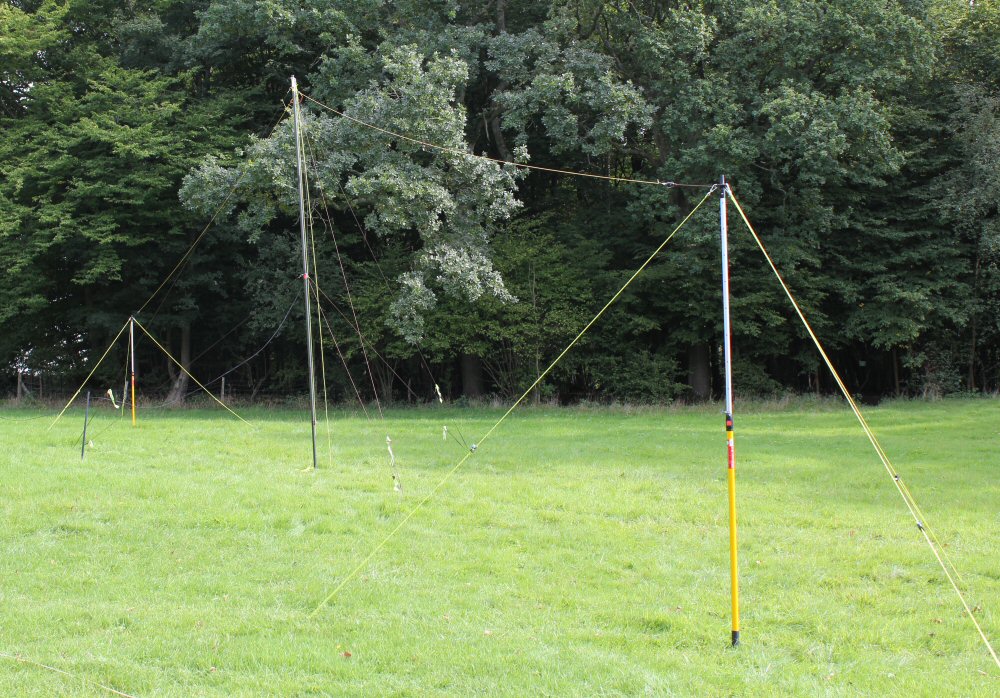
A huge thanks to Gavin for the invite, and to the other members of the DRG for their hospitality and good company. I was at their last ROTA in 2019, and as long as we're invited back, I'll definitely be making it a regular reservation in my diary.
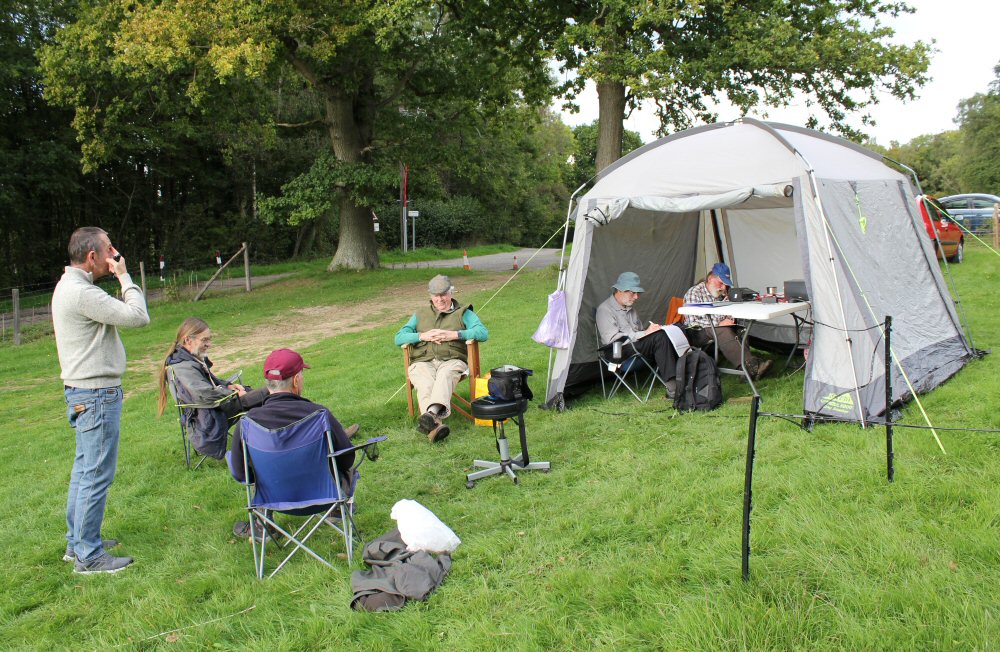
You can find out more about the SES GB0BR (Bluebell Railway) on QRZ here: https://www.qrz.com/db/GB0BR and on ROTA in general here: https://rota.barac.org.uk/
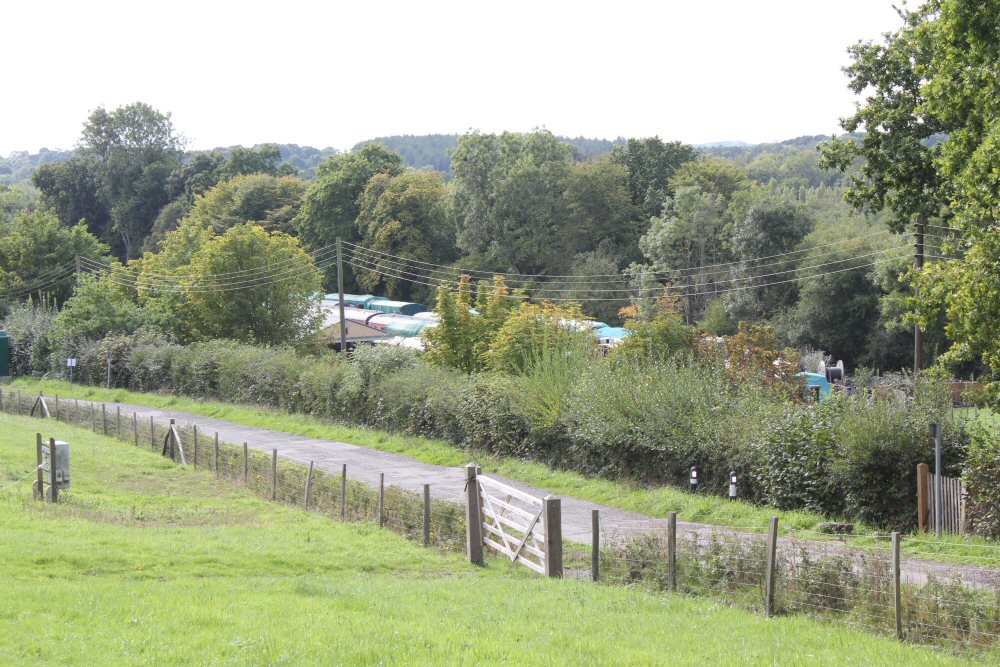
A great day catching up with a handful of old friends, and making a few new ones too.
Berni M0XYF
- Details
- Written by: Maintenance Guy
- Category: News
- Hits: 512
Down at the club shack last Friday night, I was attempting to listen to John Berry's excellent talk on Sporadic E whilst also trying to permanently install the KiwiSDR. I shamefully have to admit that I didn't get to hear enough of the talk for it to make much sense to me, but thankfully John has reconstituted enough material to generate a superb reference presentation for us on YouTube - but more on that elsewhere.
So the KiwiSDR is now up and running in its forever home, and the better quality Wellbrook antenna combined with the additional 25m of elevation relative to my QTH have given it a useful boost in performance. I'm not going to linger on that here either, because I also got the chance to run my NanoVNA up against the new end-fed HF antenna - something I had to do because the suspense was just killing me!
This article then will briefly cover the results of that analysis. I'm not an expert on VNAs, but I use mine for everything antenna-related to the point that my expensive MFJ-259C rarely sees the light of day - at least for SWR measurements.
Having an instant graphical visualisation across a wide frequency range tells a far more powerful story than a few random spot-checks on individual frequencies. You might well reflect on the fact that I'm saying that analogue representations are often far more useful that digital ones. Never let it be said that I'm an analogue-basher.
I re-calibrated my Nano just before setting out on Friday, just to make sure. It has to be borne in mind that conditions were 'moist' out there in Burgess Hill, so that will have an effect (one that, and correct me if I'm wrong, will tend to slightly lower SWR figures across the board) as well as somehow trying to reconcile that of the unusual material in the roof structure at Cyprus Hall, which is apparently particularly RF reactive in some way.
Still, let's take a look at the overall sweep graph.
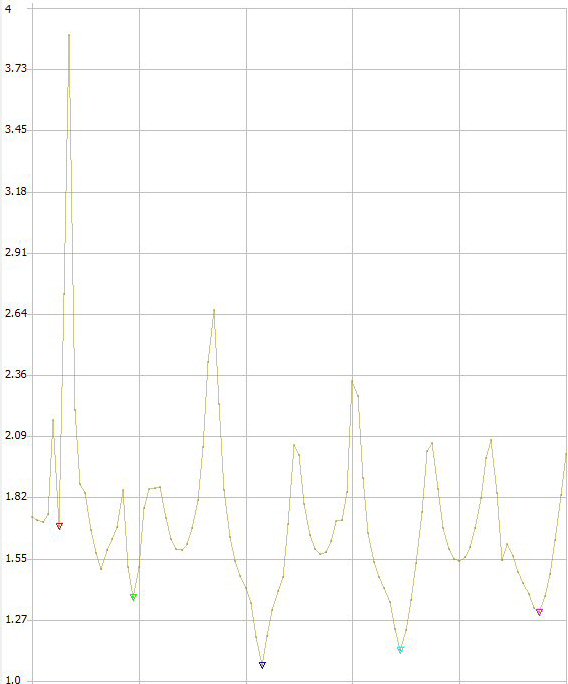
I was generally encouraged by that. At least it wasn't completely unrecognisable - but let's take a look at what this really shows us.
The five markers, which I've manually placed at the visible low-points of the SWR curve, relate to the five minimums that will probably be of most interest to us.
The SWR scale is displayed on the 'Y' axis, whilst the 'X' axis is obviously frequency, though it's not marked on here due to the reduced screen resolution of my laptop, and the fact that I was in a bit of a rush to grab something and save it. What I can tell you (and you will see this broken down in the other images below) is that the frequency range is from 1.8MHz on the left, all the way up to 30MHz on the right.
Those markers represent the resonant points on the bands for which the 80m - 10m EFHW is 'designed'. They are (loosely speaking) 80m, 40m, 20m, 15m and 10m.
Below you will be able to see the frequencies associated with those low points. A couple fall slightly outside of the amateur bands, but of course nearly any multi-band antenna is going to be a compromise, and we find that most are on the low side, but that 15m and 10m are pretty good. Overall they might be a bit low - indicating that the main element (between the transformer and the coil) is slightly too long, but let's see what it does in different conditions.
The one notable exception is 80m which is way too low, demonstrating that the 2.4m long extension beyond the coil is quite a bit too long and may need a few inches cut off or folded back. Again, let's see what dry weather and different ambient conditions bring.
What I have noticed with my version of this antenna is that despite the fact that everyone will tell you that you should get the main element tuned correctly fist, then add the coil and extension wire before additionally tuning that, and that the second step will not have any effect on the first, that this is in fact not true. At least that's my experience, and that's after a very painstaking, analytical and iterative tuning programme. That's not to say that you should abandon that approach - it's still fundamentally the correct sequence - but always leave the main element a bit longer than initially indicated, because you're likely to need that wiggle room later.
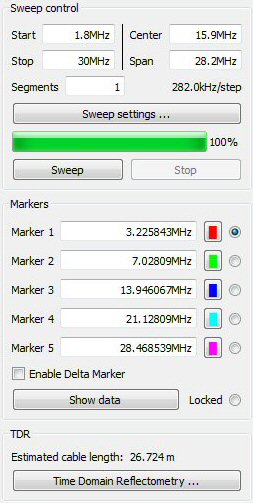
Here you can see the sweep criteria, and the relative positions of the markers. This is just where I happened to place them as a best guess based on the graph. You might be able to see that the colours of the markers tie up with those on the image above.
This is where you set the sweep range (1.8MHz to 30MHz in this case). Note that you have to have previously calibrated for this range and saved the configuration prior to starting the sweep. You can also set the 'Segments' parameter here, which is basically the 'resolution' of the sampling. I'm going to stick my neck out and directly liken it to the 'Sampling Rate'. More samples, more accuracy. Taking too many samples in wasteful and unnecessary, but taking too few samples can give rise to some strange and unrepresentative results, as you may appreciate if you know a little of the theory of DSP, ADC and of the Nyquist-Shannon sampling theorem. In the case of our end-fed though, we know where we expect to find the dips, and thankfully science hasn't let us down.
Lastly we can see the actual (sampled) minimums of SWR and the frequencies at which they occur, as well as the associated impedances, inductance and capacitance figures and the return losses. Some of this is interesting to me, some of it is lost to the mists of time and/or to the deterioration of my neural pathways since taking my exams.
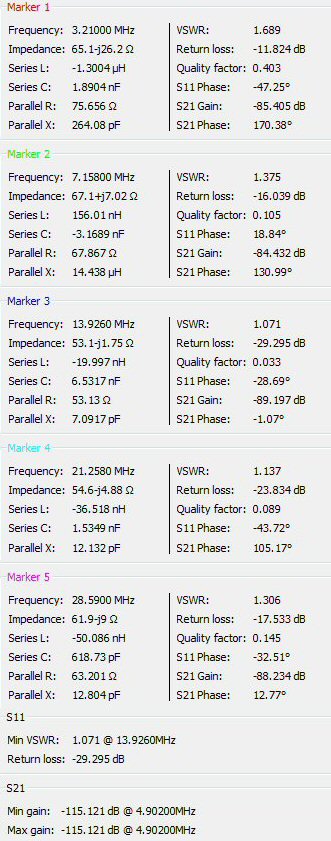
In summary, it looks pretty good to me. I'll re-run the test in dry conditions soon and see what we get, but in the meantime Peter G4AKG has scribbled down some ATU tuning presets that anyone operating HF into this antenna can draw on. They exclude the WARC bands at present, but we'll add those soon, before Stella has a couple of nice laminated versions made up.
If we can drop the coil end and abbreviate the 80m extension a tad, then I guess we'll try to do that before the weather gets much colder and wetter. We should be able to achieve that without getting all caught up in the chickenwire mesh that runs rather unhelpfully along the gutter line of the hall roof.
So there you go. I hope you found that useful or interesting. I understand that the hope is that we will now be able to put some more miles on the HF kit that lives in the darkness of the shack, and I hope that transpires. It will only be of any use to me when we have a radio on the end of this antenna that we can access from somewhere that you can see your hand in front of your face and at a time that's convenient. Having the shack is great, but it's no longer necessary to concertina yourself into a space that uncomfortable and unpleasant just to get on the air!
And while I'm at it, I noticed that the cooling fan in the Yaesu FT-847 sounds like a gas turbine-powered threshing machine in a gravel pit. Is there anybody in the club that's willing to take the lid off that thing and fit a new one? It's properly deafening!
Best 73's
Berni M0XYF :p
- Details
- Written by: Maintenance Guy
- Category: News
- Hits: 417
Some excellent photos from Mike G8KMP of the antenna installation day, which I thought you'd all like to see.
Weather was slightly miserable with very grey skies, but it never rained enough to stop work, and we all just got a little bit damp.
Thanks to Stella for keeping everyone topped up with hot drinks and biscuits.
The fella on the right below is a well-known local antenna installer with full Health and Safety certification and Public Liability Insurance. The chap on the left was the other professional from Aerialbeam, who did us proud on the day. Big shout out to him. Highly recommended for any of your own projects, should you need some help.
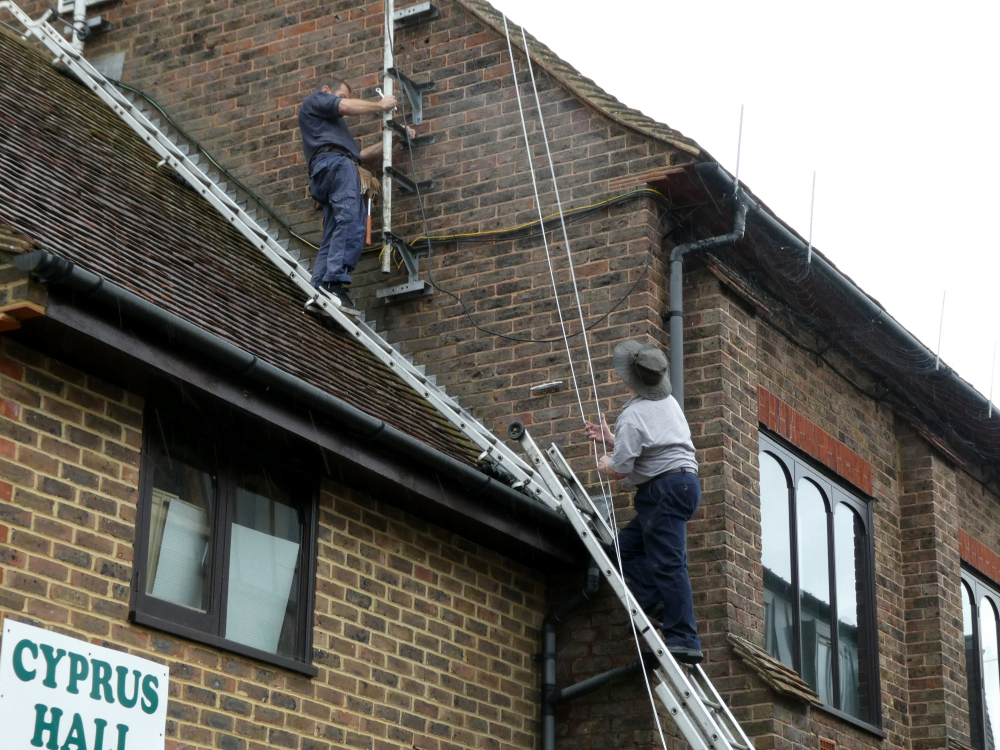
Close-up of Phil G4UDU's well-prepared and tested End Fed Half Wave impedance transformer. It's hung off the white-stick mast and is the new feed point for the HF long wire. The far end is tied-off at the front of the building on the flag pole. Both ends incorporate pulleys/lanyards to aid future accessibility. I'll try and get a photo of the 80m loading coil at the flagpole end too when I'm next up the club in the daylight. The coil is nuke-proof and beautifully crafted, if you're into that kind of thing.
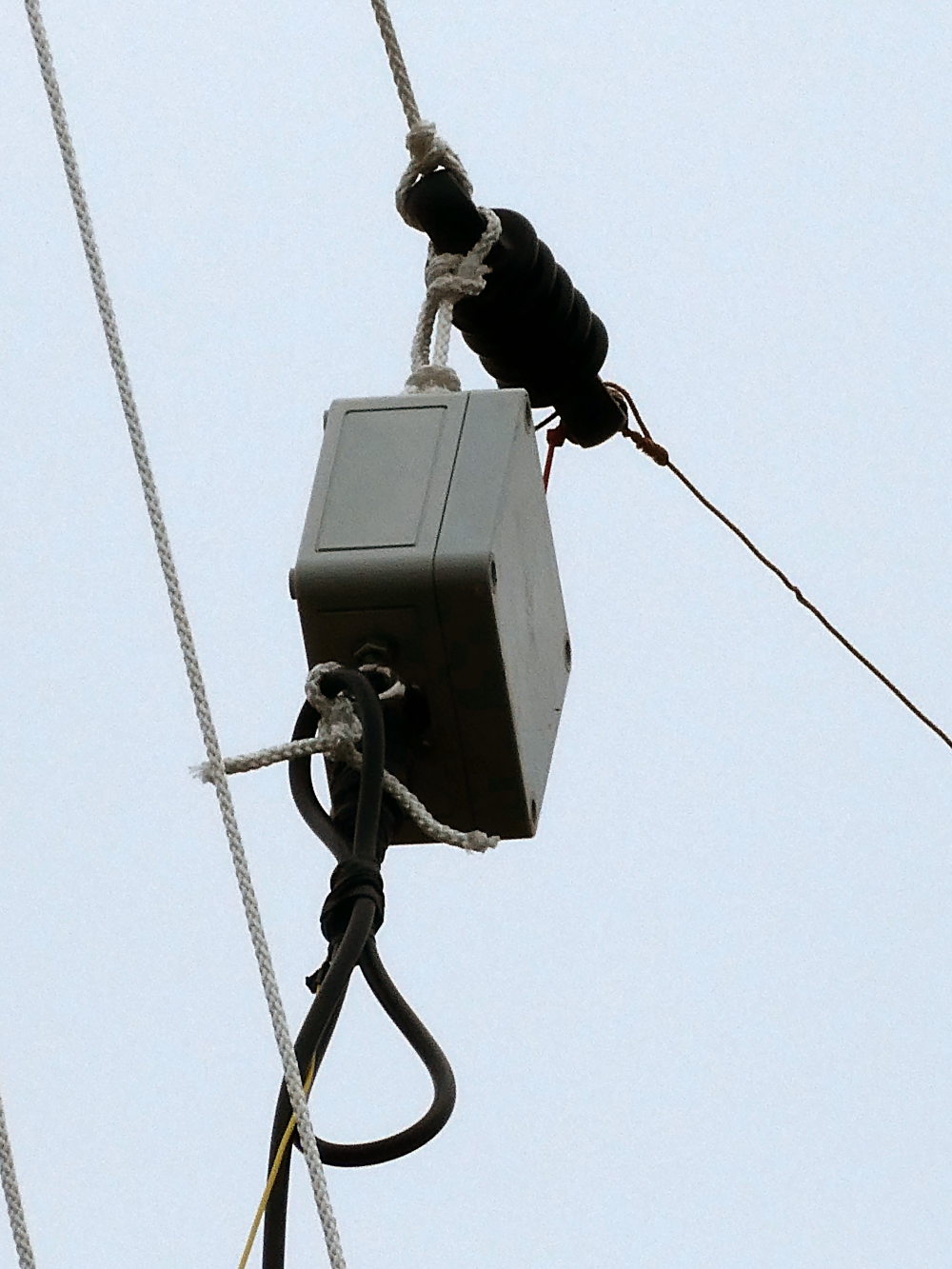
Finally, a view from the rear of the hall of the newly refurbished and rejuvenated MSARS antenna farm - good for a few years of hassle-free radio hopefully.
This shot also shows the new Wellbrook ALA1530 magnetic loop antenna, mounted on a new, longer mast on the back wall. The two new antennas have fresh Mini-8 coax run all the way back to the shack, with generous coils left over for any future shack re-orgs or mishaps.
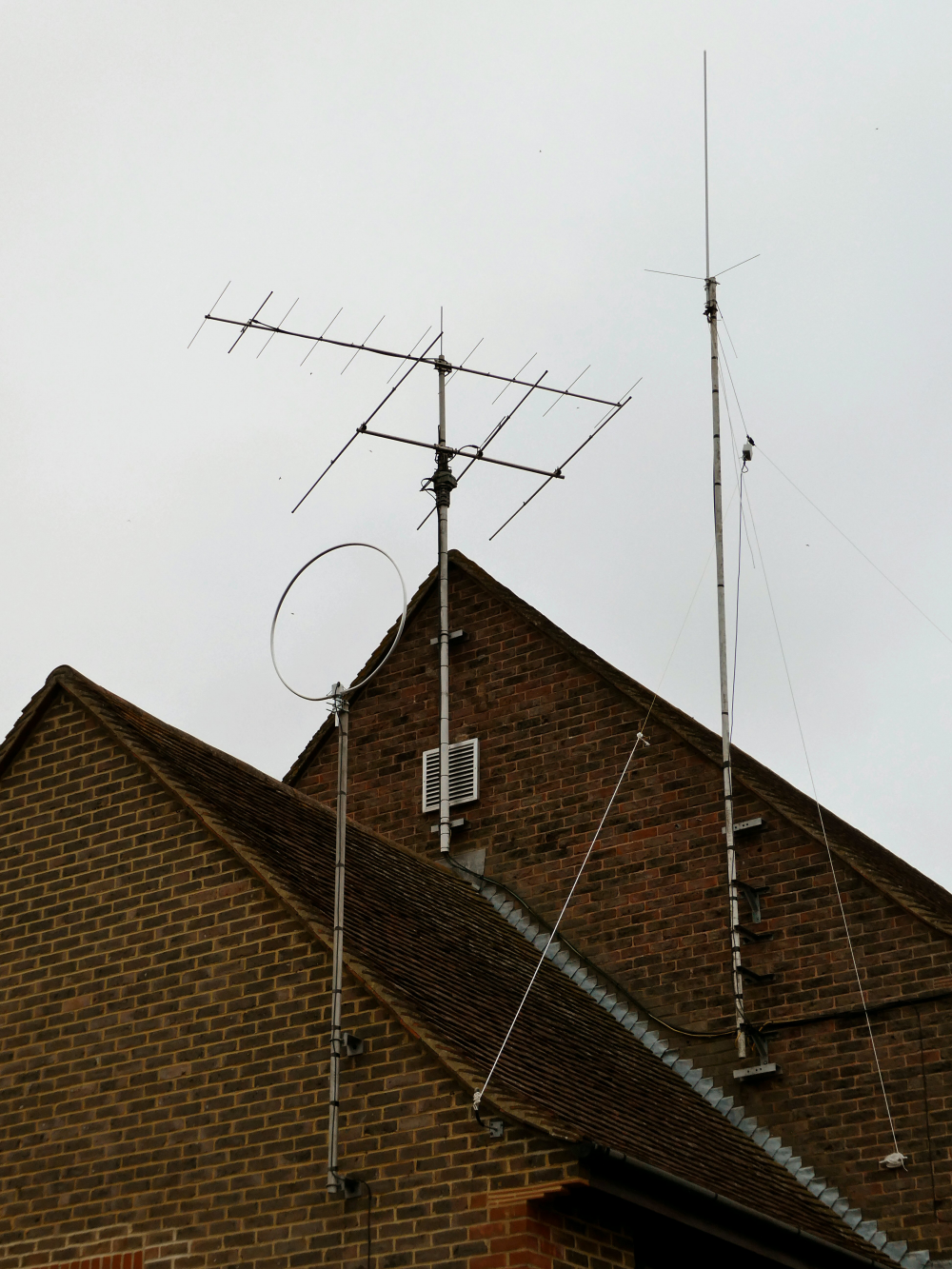
Berni M0XYF

